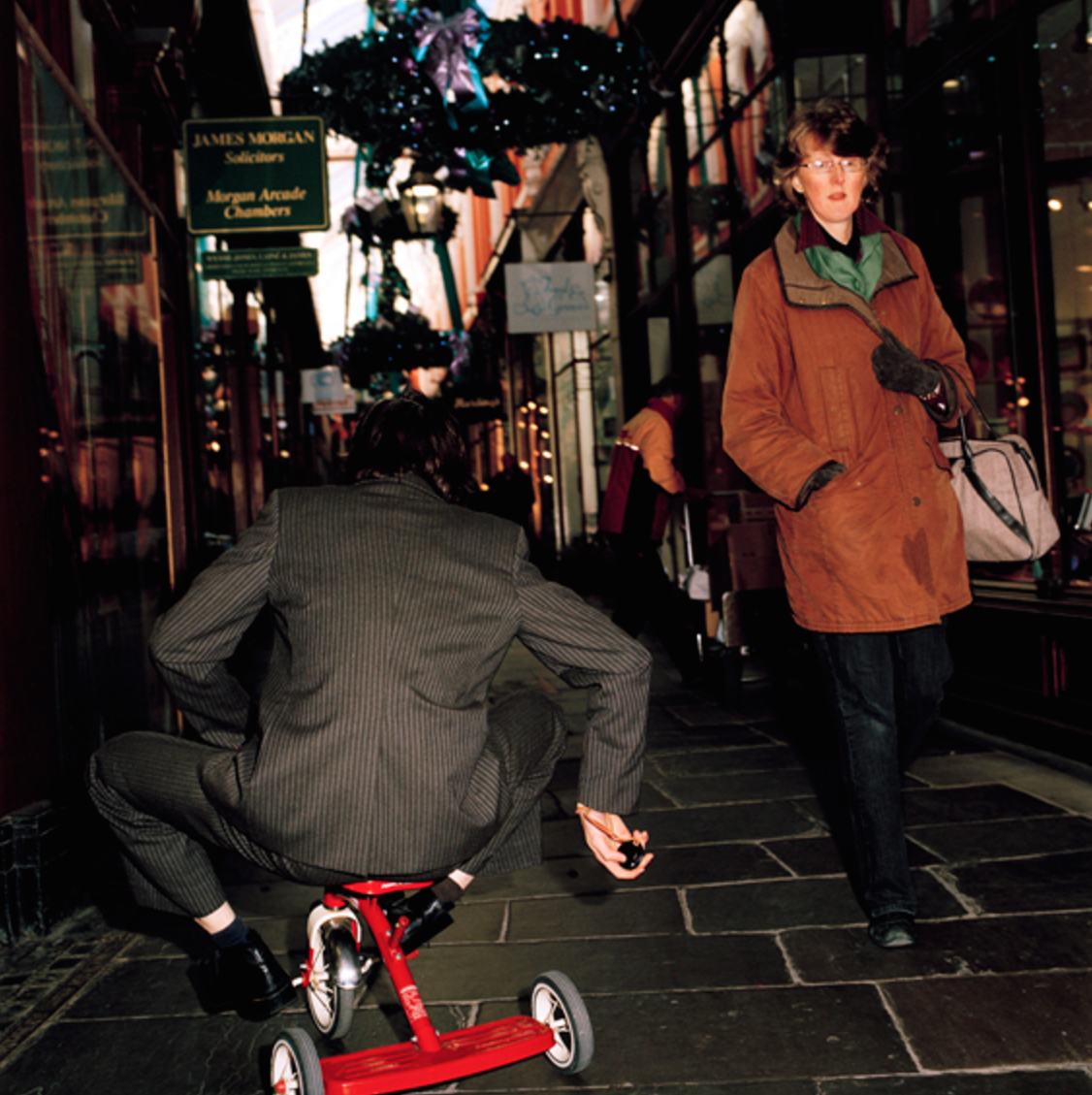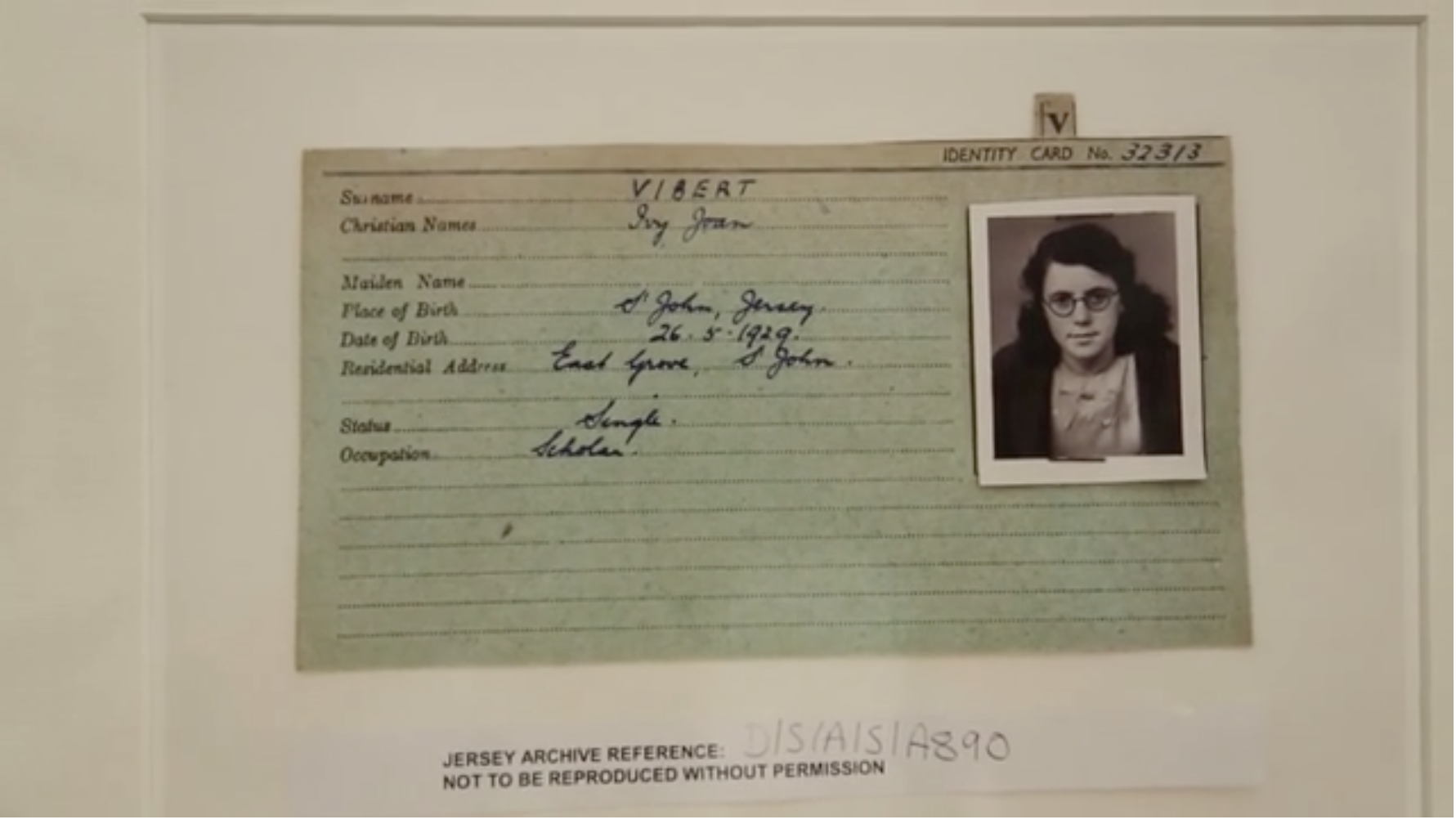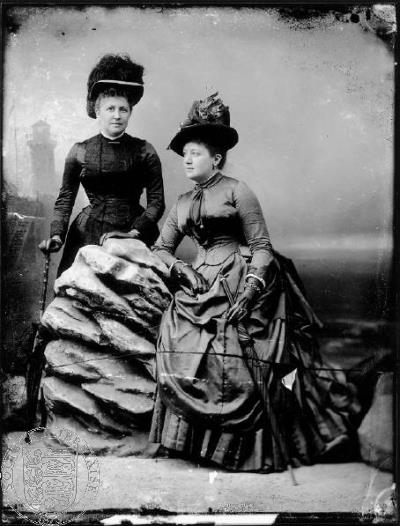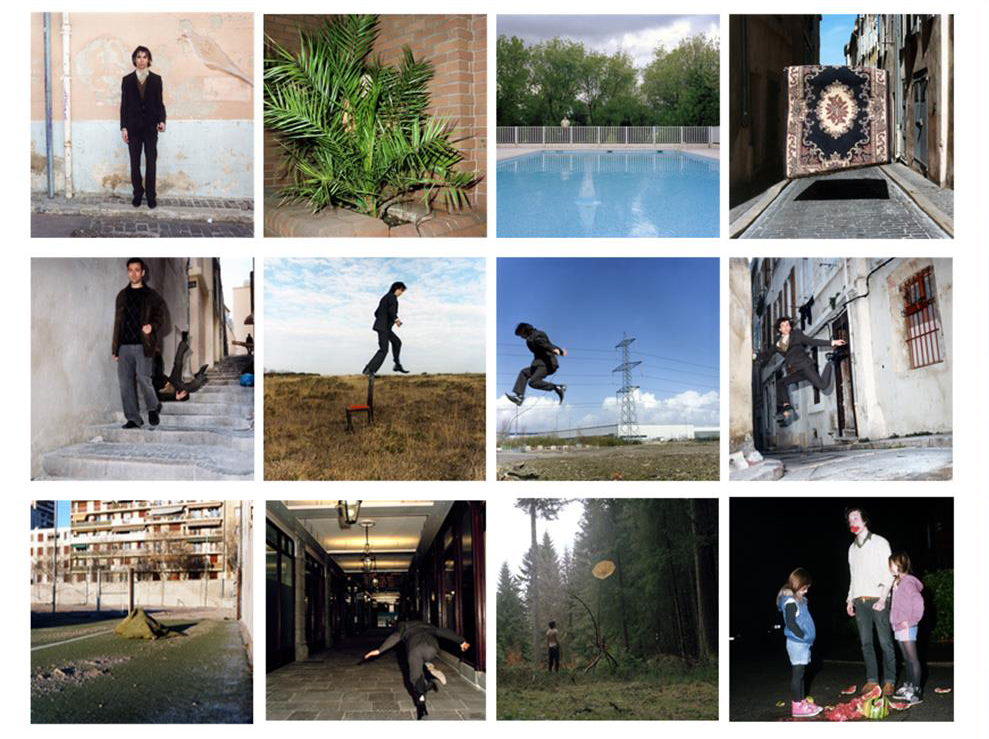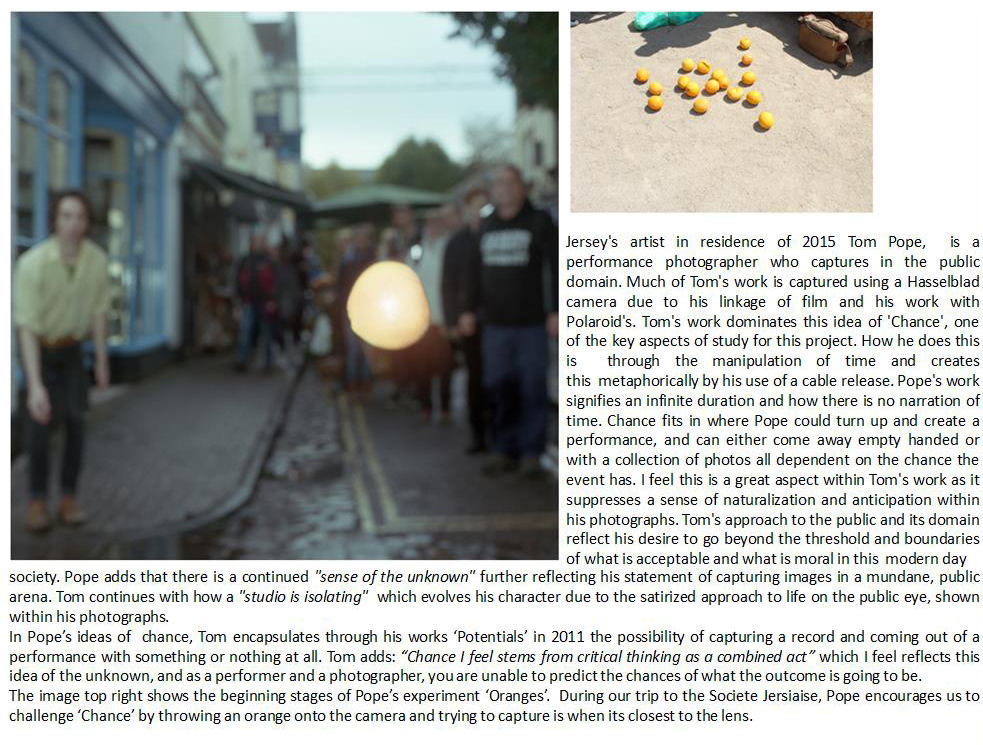
This outcome depicts a game of ‘selfie battle’ taking place between Ben and Mr Toft. I find that this image is effective because it captures both individuals completely submerged in the game, putting all their focus and attention into it. Whilst the game is taking place there is a small gathering of people looking intently at the game. This image is evidence to support the appealing nature that performance plays beacause it has created a ‘spectacle’ (see blog post on Situationism) by which people surrender their focus, time and effort towards. A question which is interesting to considered is whether the audience is concerned with the material aspects of the game itself (i.e who wins and who loses) or instead are they concerned with the moments of fun and interaction in which it creates.
There is something which i find very appealing about this image. There is a sense of positivity that it evokes form two people enjoying a simple, unplanned moment. There is also a certain intensity to it. You definitely can see a battle going on, and tension is evoked through the look of excitement from the crowd.
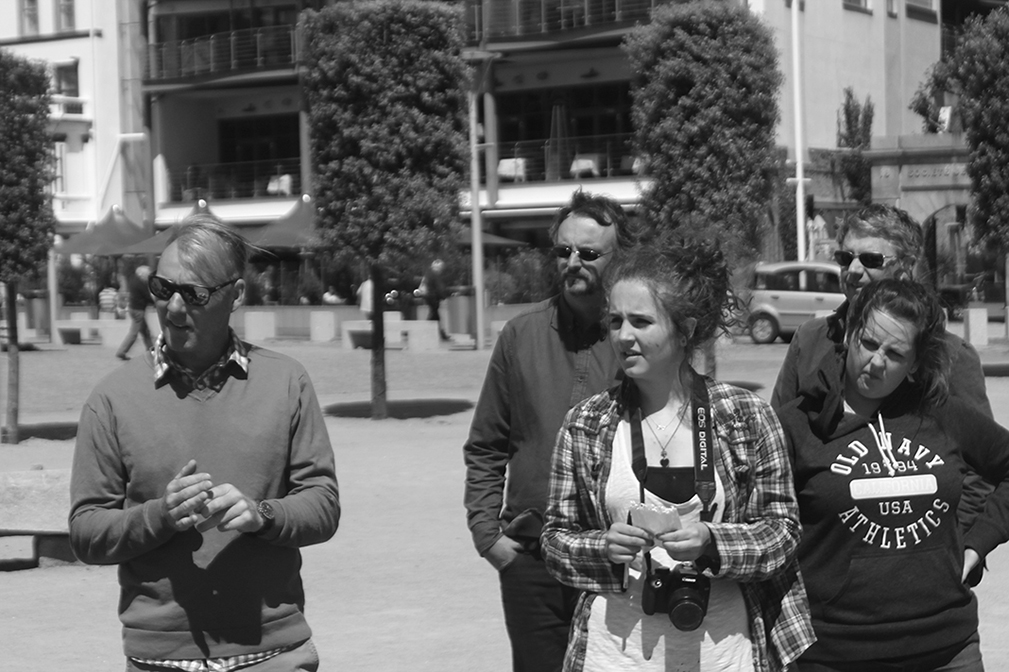
In this photo, I have captured a few people observing one of Tom Pope’s performances. What I find very interesting about this image is that the individuals appear completely drawn into awe and fascination by the performance taking place. There is a definate feel of intensity in this photo in the sense that all subjects seem to be diverting all of their attention and energy into exactly the same place, and all seem to be drawn into absorbing the feel of a particualr moment. This photograph I think shows how powerful single moments have in creating an effect on people around. This therefore explains the potential that performance has to convey important messages through the large amount of focus and attention that it seems to evoke an audience.
There is also a sense of mystery to this photograph. They are looking intently at something which the view of the image has no knowledge of. This therefore forces the viewer to consider the what type of performance or event that is taking place. A moment is created because of a completely separate moment, a domino concept which i find to be very fascinating.
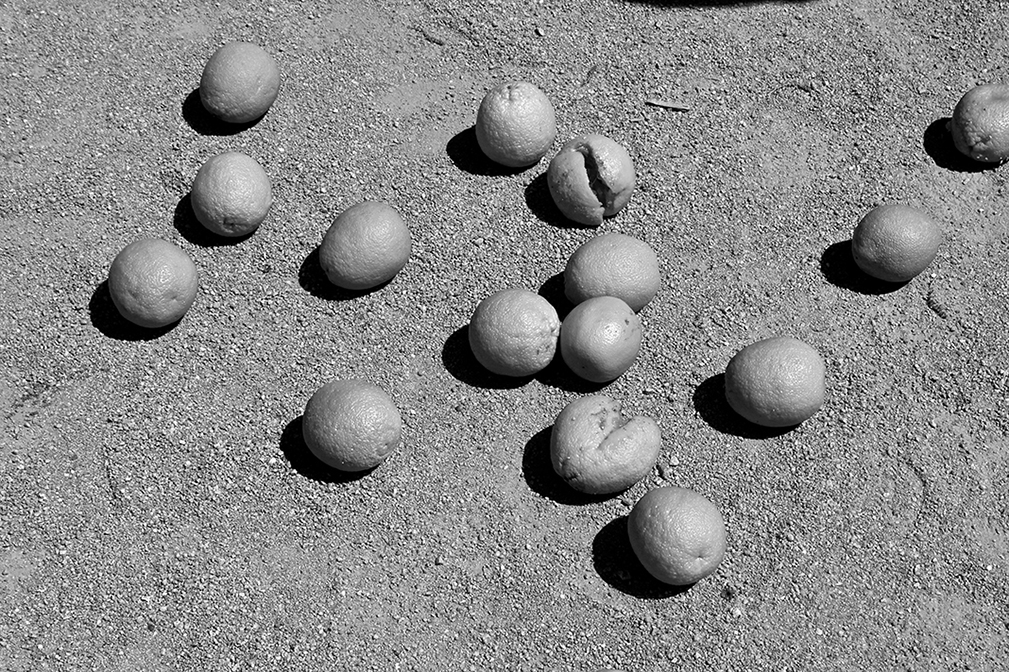
This photograph shows a few oranges lying on the ground after the orange throwing game. Some of the oranges were dropped on the floor and therefore have been bruised, split and cut. This is a subtle image that effectively shows the consequence of an action. Because the oranges were thrown around they therefore dropped on the floor in some instances. On a deeper level this symbolises the fact that an action will allows be followed by a response. This logic can subsequently be applied to performance photography. The performance will always result in a reaction form an audience, whether that is sub-consciously, subtly or dramatically – it does not matter. The act of the performance will occupy the viewers mind for a certain point and temporally control their action, viewpoints and perspective.

